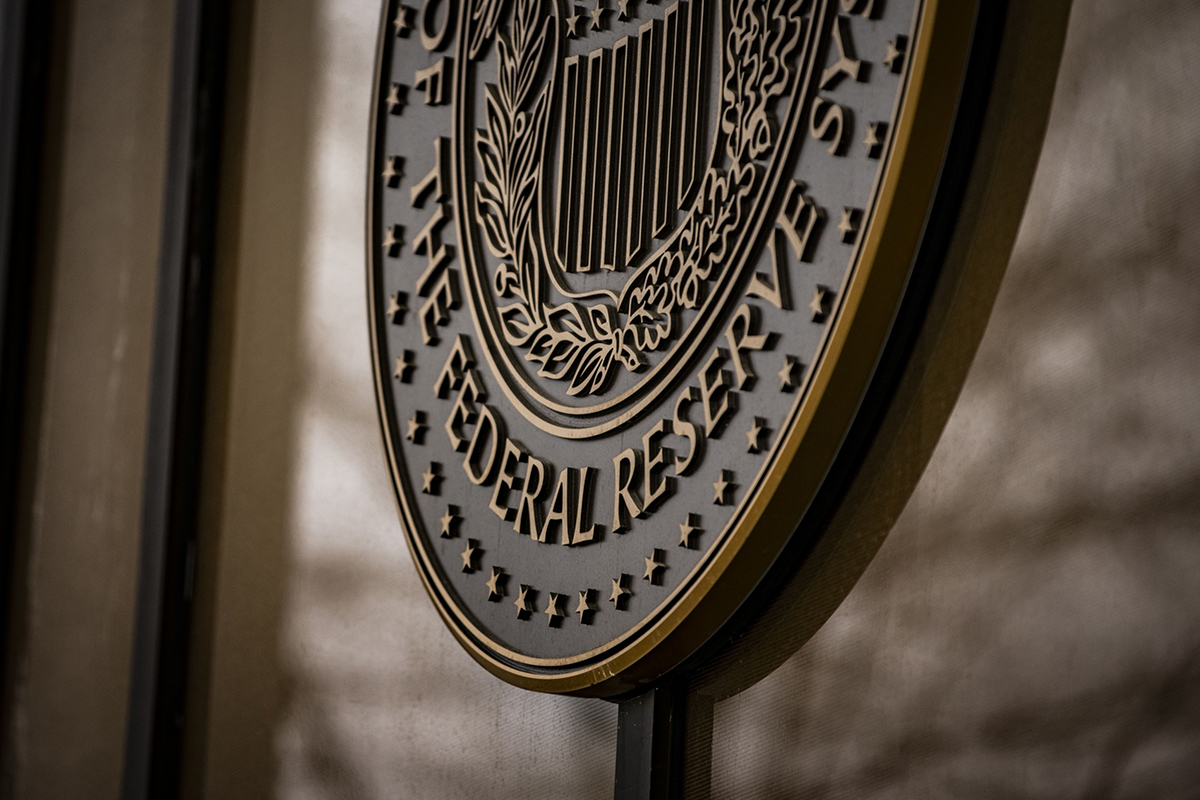 The seal of the U.S. Federal Reserve Board of Governors.
The seal of the U.S. Federal Reserve Board of Governors.
When they met earlier this month, Federal Reserve officials continued to anticipate further increases in borrowing costs would be necessary to bring inflation down to their 2 percent target, although almost all supported a step down in the pace of interest rate hikes.
"Participants observed that a restrictive policy stance would need to be maintained until the incoming data provided confidence that inflation was on a sustained downward path to 2 percent, which was likely to take some time," according to the minutes of the gathering on January 31 and February 1, which were released in Washington yesterday.
Recommended For You
The minutes also said "almost all" officials agreed it was appropriate to raise interest rates by 25 basis points (bps) at the meeting, while "a few" favored, or could have supported, a bigger 50 bps hike.
U.S. central bankers raised interest rates by a quarter point, moderating their action after a half-point hike in December and four consecutive jumbo-sized 75 bps increases. The move lifted the benchmark policy rate into a range of 4.5 percent to 4.75 percent. Both Chair Jerome Powell and the minutes indicated that officials are prepared to raise rates further to produce a broader slowdown in the economy that tamps down inflation.
"Participants generally noted that upside risks to the inflation outlook remained a key factor shaping the policy outlook, and that maintaining a restrictive policy stance until inflation is clearly on a path toward 2 percent is appropriate from a risk-management perspective," the minutes said. A number of officials said that an "insufficiently restrictive" policy stance could stall recent progress on moderating inflation pressures, according to the minutes.
The economy exited 2022 "with more momentum in the labor market and risks around inflation" than Fed officials likely expected, said Michael Gapen, head of U.S. economics at Bank of America Securities. "We need to see broad-based disinflation, and we didn't get that in recent data."
Gapen's forecast is for the Fed to continue tightening to a range of 5.25 percent to 5.5 percent, one hike above the 5.1 percent median officials forecast in December.
Going into the meeting, money markets forecast interest-rate cuts in the back half of 2023. They have since tempered bets on the likelihood that the Fed will reverse course and start cutting rates before the end of this year.
Kathy Bostjancic, chief economist at Nationwide Life Insurance Co., said she raised her forecast for the peak federal funds rate to a range of 5.25 percent to 5.5 percent, given the strong employment and inflation data for January. Payrolls increased 517,000 that month, while the consumer price index, excluding food and energy prices, rose 5.6 percent from a year earlier.
Following the release of the minutes, swaps traders kept steady their conviction that the Fed will keep pushing rates higher, with the market indicating that 25 bps hikes are likely coming at the March, May, and June meetings. Investors lifted expectations for where rates will peak to around 5.36 percent.
Treasury yields fluctuated while remaining lower on the day, while the S&P 500 index closed slightly lower and the dollar remained higher.
The shift in sentiment has also helped tighten financial conditions somewhat—potentially aiding the central bank as it fights to bring inflation under control amid a tight job market.
In the minutes Wednesday, Fed officials said that it was important "that overall financial conditions be consistent with the degree of policy restraint that the Committee is putting into place in order to bring inflation back to the 2 percent goal."
Cleveland Fed President Loretta Mester said last Thursday that she had seen a "compelling" economic case for a half-point increase during the last meeting, a view echoed later that day by St. Louis Fed chief James Bullard. Neither official votes on policy decisions this year.
—With assistance from Liz Capo McCormick and Jordan Yadoo.
© Touchpoint Markets, All Rights Reserved. Request academic re-use from www.copyright.com. All other uses, submit a request to [email protected]. For more inforrmation visit Asset & Logo Licensing.



